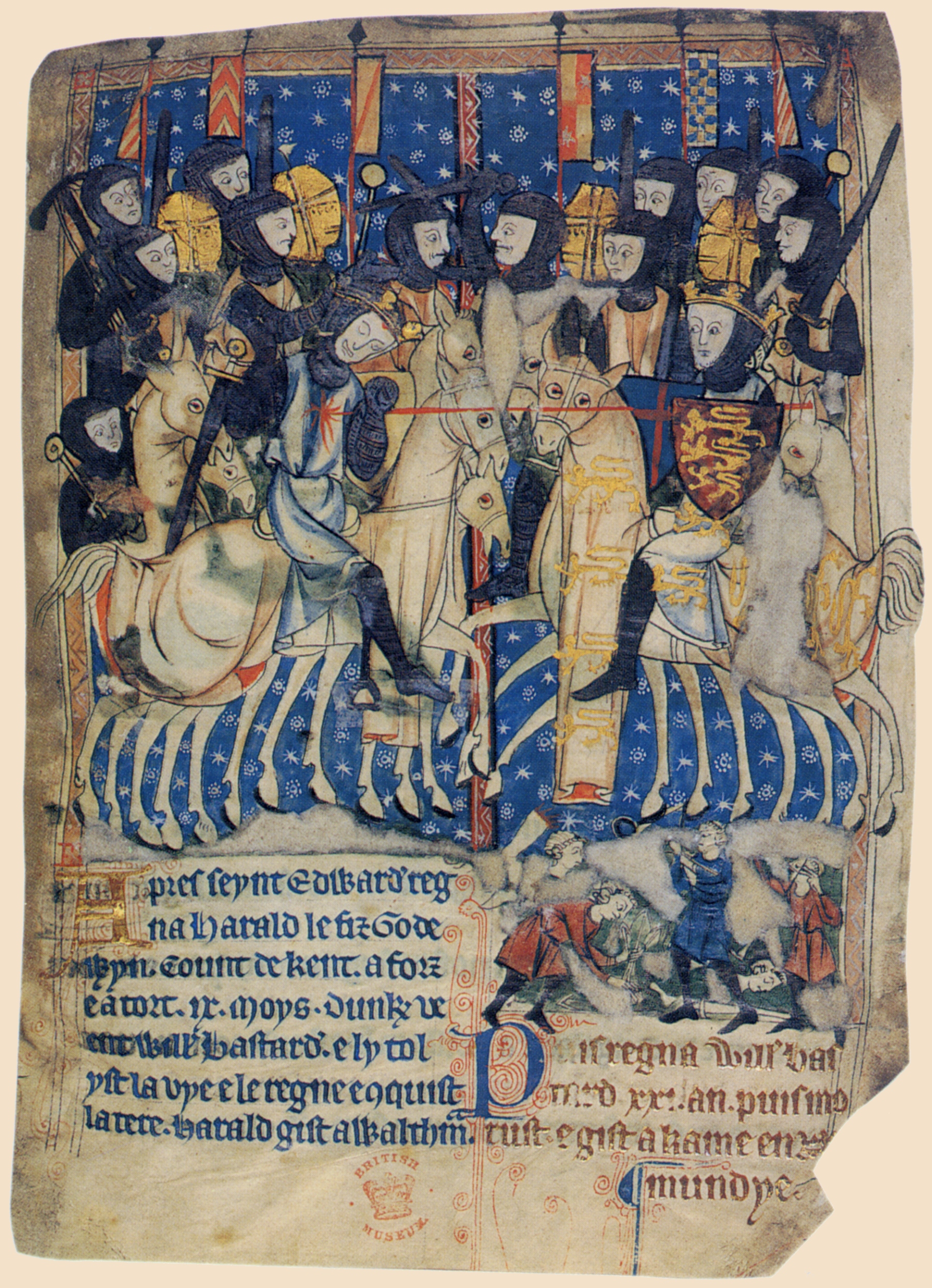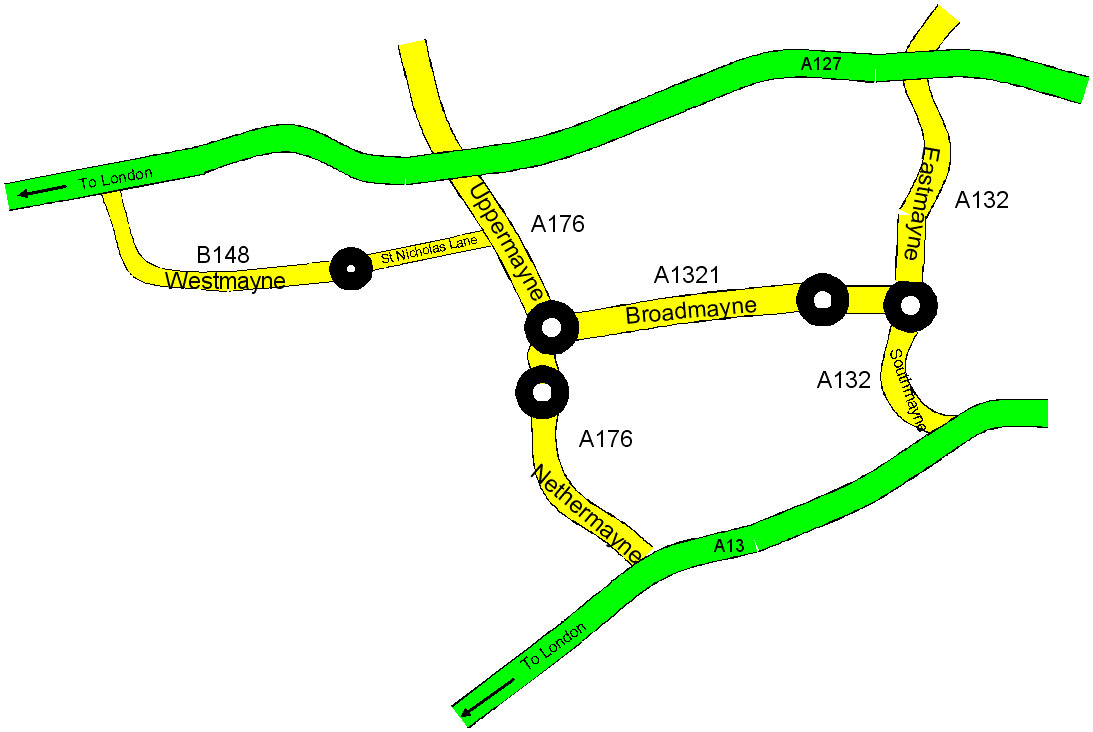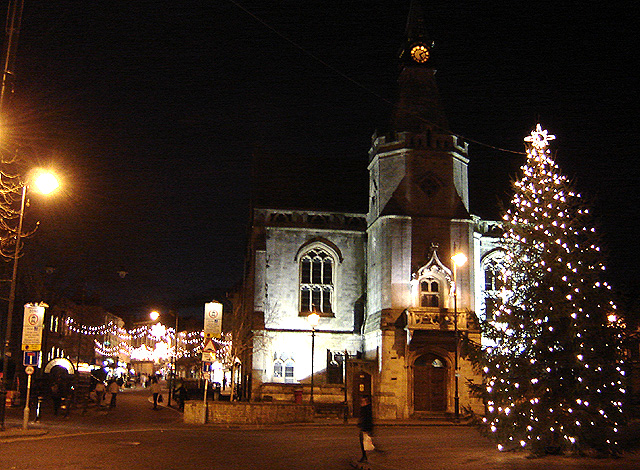|
London Overspill
London overspill communities are the communities created as a result of the government policy of moving residents out of Greater London into other areas in the South East of England between the 1930s and the 1970s. These largely consisted of council houses and new towns. Policy development The policy was instigated in the 1930s, but started in earnest after the Second World War, as a reaction to the housing shortages caused by enemy bombing and large amounts of substandard housing in the capital. This policy existed until the late 1970s, reinforced by a widespread dislike of ribbon development. Started by the London County Council, the task was completed by its successor, the Greater London Council. In the 1960s, the Location of Offices Bureau dispersed office workers away from the capital. In 1960, the Greater London Plan proposed that over one million Londoners should be relocated from Inner London. The great majority of overspill families were relocated either to existing or n ... [...More Info...] [...Related Items...] OR: [Wikipedia] [Google] [Baidu] |
Greater London
Greater may refer to: *Greatness, the state of being great *Greater than, in inequality (mathematics), inequality *Greater (film), ''Greater'' (film), a 2016 American film *Greater (flamingo), the oldest flamingo on record *Greater (song), "Greater" (song), by MercyMe, 2014 *Greater Bank, an Australian bank *Greater Media, an American media company See also * * {{Disambiguation ... [...More Info...] [...Related Items...] OR: [Wikipedia] [Google] [Baidu] |
Economic Planning Region
England is divided by a number of different regional schemes for various purposes. Since the creation of the Government Office Regions in 1994 and their adoption for statistical purposes in 1999, some historical regional schemes have become obsolete. However, many alternative regional designations also exist and continue to be widely used. Alternative Cultural Informal and overlapping regional designations are often used to describe areas of England. They include: * Midlands, often considered interchangeable with Mercia ** ** Welsh Marches **Staffordshire Potteries **Three Counties *Northern England **Scottish Marches *Southern England **Home Counties ***M4 corridor ****Thames Valley ** Cinque Ports **West Country, often considered interchangeable with Wessex Heptarchy Heptarchy, former kingdom names which did not become counties have continued to be recognised by organisations as regions: * , generally interchangeable the West Country excluding Cornwall * *, often considered in ... [...More Info...] [...Related Items...] OR: [Wikipedia] [Google] [Baidu] |
Hastings
Hastings () is a large seaside town and borough in East Sussex on the south coast of England, east to the county town of Lewes and south east of London. The town gives its name to the Battle of Hastings, which took place to the north-west at Senlac Hill in 1066. It later became one of the medieval Cinque Ports. In the 19th century, it was a popular seaside resort, as the railway allowed tourists and visitors to reach the town. Today, Hastings is a fishing port with the UK's largest beach-based fishing fleet. It has an estimated population of 92,855 as of 2018. History Early history The first mention of Hastings is found in the late 8th century in the form ''Hastingas''. This is derived from the Old English tribal name '' Hæstingas'', meaning 'the constituency (followers) of Hæsta'. Symeon of Durham records the victory of Offa in 771 over the ''Hestingorum gens'', that is, "the people of the Hastings tribe." Hastingleigh in Kent was named after that tribe. The place n ... [...More Info...] [...Related Items...] OR: [Wikipedia] [Google] [Baidu] |
Harlow
Harlow is a large town and local government district located in the west of Essex, England. Founded as a new town, it is situated on the border with Hertfordshire and London, Harlow occupies a large area of land on the south bank of the upper Stort Valley, which has been made navigable through other towns and features a canal section near its watermill. Old Harlow is a historic village founded by the early medieval age and most of its high street buildings are early Victorian and residential, mostly protected by one of the Conservation Areas in the district. In Old Harlow is a field named Harlowbury, a de-settled monastic area which has the remains of a chapel, a scheduled ancient monument. The M11 motorway passes through to the east of the town. Harlow has its own commercial and leisure economy. It is also an outer part of the London commuter belt and employment centre of the M11 corridor which includes Cambridge and London Stansted Airport to the north. At the time of th ... [...More Info...] [...Related Items...] OR: [Wikipedia] [Google] [Baidu] |
Farnborough, Hampshire
Farnborough is a town in northeast Hampshire, England, part of the borough of Rushmoor and the Farnborough/Aldershot Built-up Area. Farnborough was founded in Anglo-Saxons, Saxon times and is mentioned in the Domesday Book of 1086. The name is formed from ''Ferneberga'' which means "fern hill". According to the UK-wide 2011 Census, the population of Farnborough is 57,486. The town is probably best known for its association with aviation, with the Farnborough Airshow, Farnborough Airport, Royal Aircraft Establishment, and the Air Accidents Investigation Branch. History Farnborough is mentioned in the Domesday Book as part of the settlement of Crondall. Over the centuries, it was known as ''Ferneberga'' (11th century); ''Farnburghe'', ''Farenberg'' (13th century); ''Farnborowe'', ''Fremborough'', and ''Farneborough'' (16th century). Tower Hill Tower Hill, Cove: There is substantial evidence that many years ago a large accumulation of Sarsen stones existed upon what later came t ... [...More Info...] [...Related Items...] OR: [Wikipedia] [Google] [Baidu] |
Crawley
Crawley () is a large town and borough in West Sussex, England. It is south of London, north of Brighton and Hove, and north-east of the county town of Chichester. Crawley covers an area of and had a population of 106,597 at the time of the 2011 Census. The area has been inhabited since the Stone Age, and was a centre of ironworking in Roman times. Crawley developed slowly as a market town from the 13th century, serving the surrounding villages in the Weald. Its location on the main road from London to Brighton brought passing trade, which encouraged the development of coaching inns. A rail link to London opened in 1841. Gatwick Airport, nowadays one of Britain's busiest international airports, opened on the edge of the town in the 1940s, encouraging commercial and industrial growth. After the Second World War, the British Government planned to move large numbers of people and jobs out of London and into new towns around South East England. The New Towns Act 1946 design ... [...More Info...] [...Related Items...] OR: [Wikipedia] [Google] [Baidu] |
Braintree, Essex
Braintree is a town and former civil parish in Essex, England. The principal settlement of Braintree District, it is located northeast of Chelmsford and west of Colchester. According to the 2011 Census, the town had a population of 41,634, while the urban area, which includes Great Notley, Rayne and High Garrett, had a population of 53,477. Braintree has grown contiguously with several surrounding settlements. Braintree proper lies on the River Brain and to the south of Stane Street, the Roman road from Braughing to Colchester, while Bocking lies on the River Blackwater and to the north of the road. The two are sometimes referred to together as Braintree and Bocking, and on 1 April 1934 they formed the civil parish of that name, which is now unparished. In 1931 the parish had a population of 8912. Braintree is bypassed by the modern-day A120 and A131 roads, while trains serve two stations in the town, at the end of the Braintree Branch Line. Braintree is twinned ... [...More Info...] [...Related Items...] OR: [Wikipedia] [Google] [Baidu] |
Bracknell
Bracknell () is a large town and civil parish in Berkshire, England, the westernmost area within the Greater London Built-up Area, Greater London Urban Area and the administrative centre of the Bracknell Forest, Borough of Bracknell Forest. It lies to the east of Reading, Berkshire, Reading, south of Maidenhead, southwest of Windsor, Berkshire, Windsor and west of central London. Originally a market village and part of the Windsor Great Forest, Bracknell experienced a period of huge growth during the mid-20th century when it was declared a New towns in the United Kingdom, new town. Planned at first for a population of 25,000, Bracknell New Town was further expanded in the late 1960s to accommodate a population of 60,000. As part of this expansion, Bracknell absorbed many of the surrounding hamlets including Easthampstead, Ramslade and Old Bracknell. As of 2021, Bracknell Forest has an estimated population of around 113,205 (Census 2021). It is a commercial centre and the UK h ... [...More Info...] [...Related Items...] OR: [Wikipedia] [Google] [Baidu] |
Bletchley
Bletchley is a constituent town of Milton Keynes, Buckinghamshire, England. It is situated in the south-west of Milton Keynes, and is split between the civil parishes of Bletchley and Fenny Stratford and West Bletchley. Bletchley is best known for Bletchley Park, the headquarters of Britain's World War II codebreaking organisation, and now a major tourist attraction. The National Museum of Computing is also located on the Park. History Origins and early modern history The town name is Anglo-Saxon and means ''Blæcca's clearing''. It was first recorded in manorial rolls in the 12th century as ''Bicchelai'', then later as ''Blechelegh'' (13th century) and ''Blecheley'' (14th–16th centuries). Just to the south of Fenny Stratford, there was Romano-British town, '' M'' on either side of Watling Street, a Roman road. Bletchley was originally a minor village on the outskirts of Fenny Stratford, of lesser importance than Water Eaton. Fenny Stratford fell into decline from the Engl ... [...More Info...] [...Related Items...] OR: [Wikipedia] [Google] [Baidu] |
Basingstoke
Basingstoke ( ) is the largest town in the county of Hampshire. It is situated in south-central England and lies across a valley at the source of the River Loddon, at the far western edge of The North Downs. It is located north-east of Southampton, south-west of London, 27 miles (43 km) west of Guildford, south of Reading and north-east of the county town and former capital Winchester. According to the 2016 population estimate, the town had a population of 113,776. It is part of the borough of Basingstoke and Deane and part of the parliamentary constituency of Basingstoke. Basingstoke is an old market town expanded in the mid-1960s, as a result of an agreement between London County Council and Hampshire County Council. It was developed rapidly after the Second World War, along with various other towns in the United Kingdom, in order to accommodate part of the London 'overspill' as perceived under the Greater London Plan in 1944. Basingstoke market was mentioned in ... [...More Info...] [...Related Items...] OR: [Wikipedia] [Google] [Baidu] |
Basildon
Basildon ( ) is the largest town in the borough of Basildon, within the county of Essex, England. It has a population of 107,123. In 1931 the parish had a population of 1159. It lies east of Central London, south of the city of Chelmsford and west of Southend-on-Sea. Nearby smaller towns include Billericay to the north-west, Wickford to the north-east and South Benfleet to the south-east. It was created as a new town after World War II in 1948, to accommodate the London population overspill from the conglomeration of four small villages, namely Pitsea, Laindon, Basildon (the most central of the four) and Vange. The local government district of Basildon, which was formed in 1974 and received borough status in 2010, encapsulates a larger area than the town itself; the two neighbouring towns of Billericay and Wickford, as well as rural villages and smaller settlements set among the surrounding countryside, fall within its borders. Basildon Town is one of the most densely populat ... [...More Info...] [...Related Items...] OR: [Wikipedia] [Google] [Baidu] |
Banbury
Banbury is a historic market town on the River Cherwell in Oxfordshire, South East England. It had a population of 54,335 at the 2021 Census. Banbury is a significant commercial and retail centre for the surrounding area of north Oxfordshire and southern parts of Warwickshire and Northamptonshire which are predominantly rural. Banbury's main industries are motorsport, car components, electrical goods, plastics, food processing and printing. Banbury is home to the world's largest coffee-processing facility (Jacobs Douwe Egberts), built in 1964. The town is famed for Banbury cakes, a spiced sweet pastry dish. Banbury is located north-west of London, south-east of Birmingham, south-east of Coventry and north-west of Oxford. History Toponymy The name Banbury may derive from "Banna", a Saxon chieftain said to have built a stockade there in the 6th century (or possibly a byname from ang, bana meaning ''felon'', ''murderer''), and / meaning ''settlement''. In Anglo Saxon i ... [...More Info...] [...Related Items...] OR: [Wikipedia] [Google] [Baidu] |



_p62a_-_Braintree.jpg)



